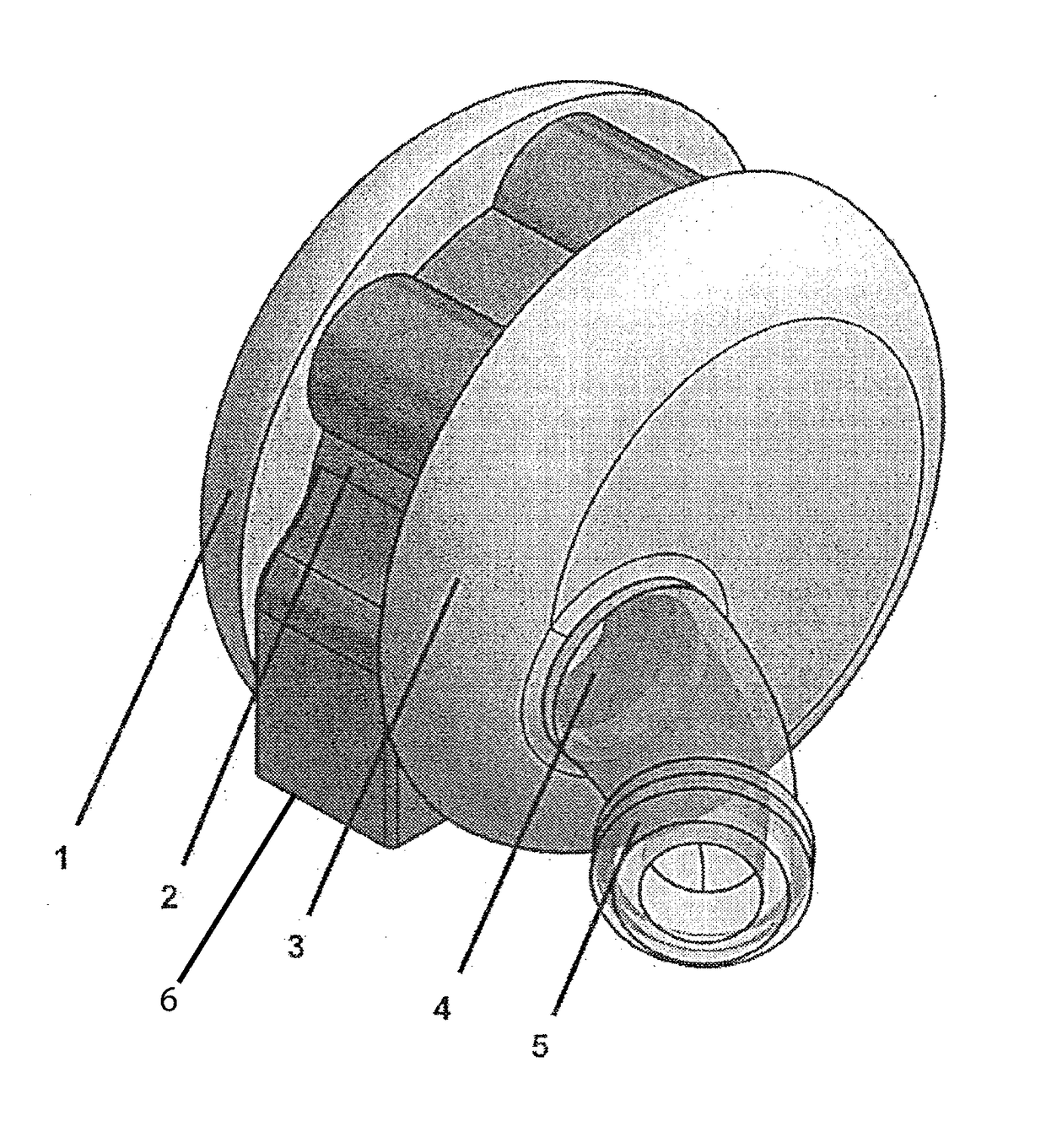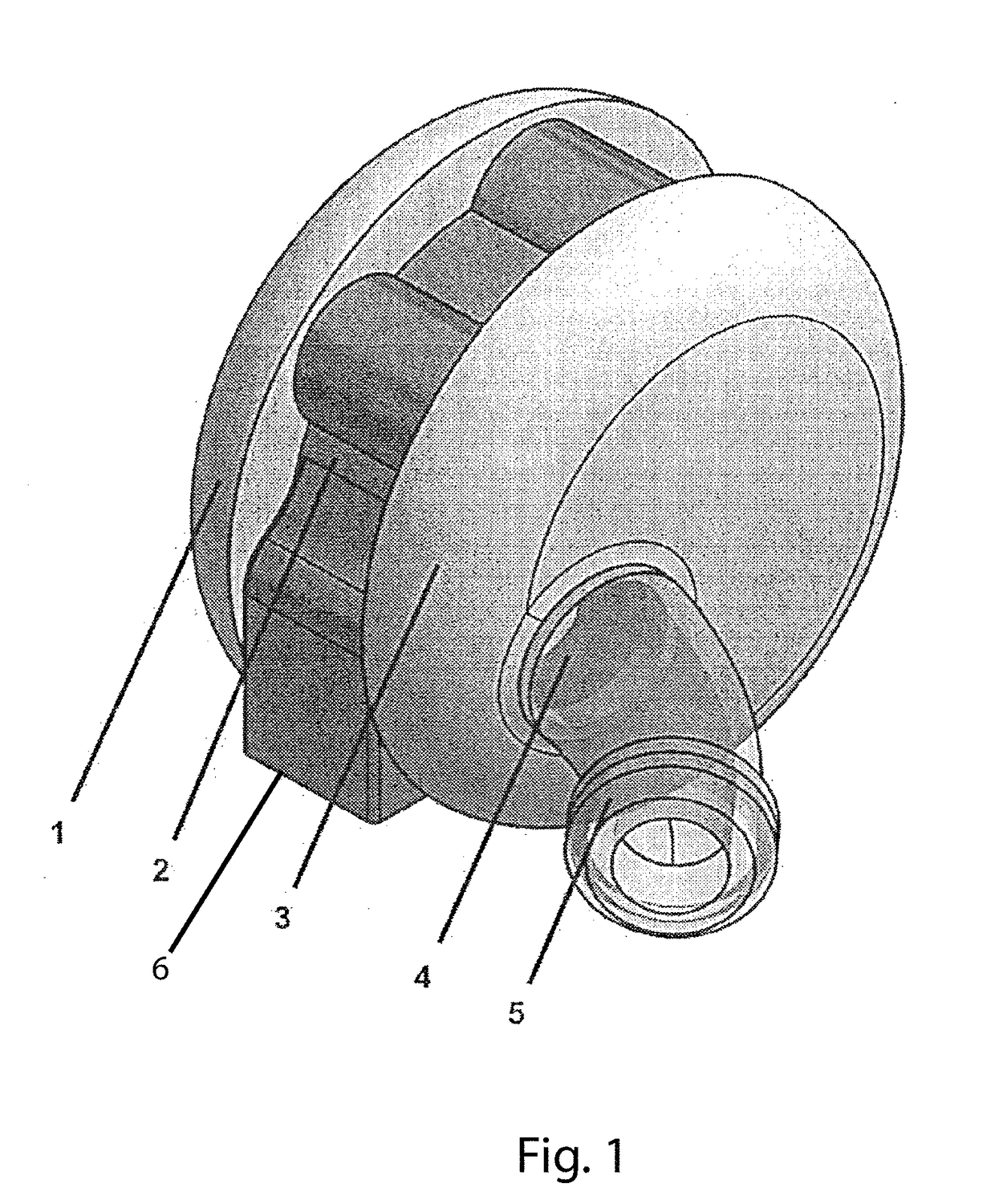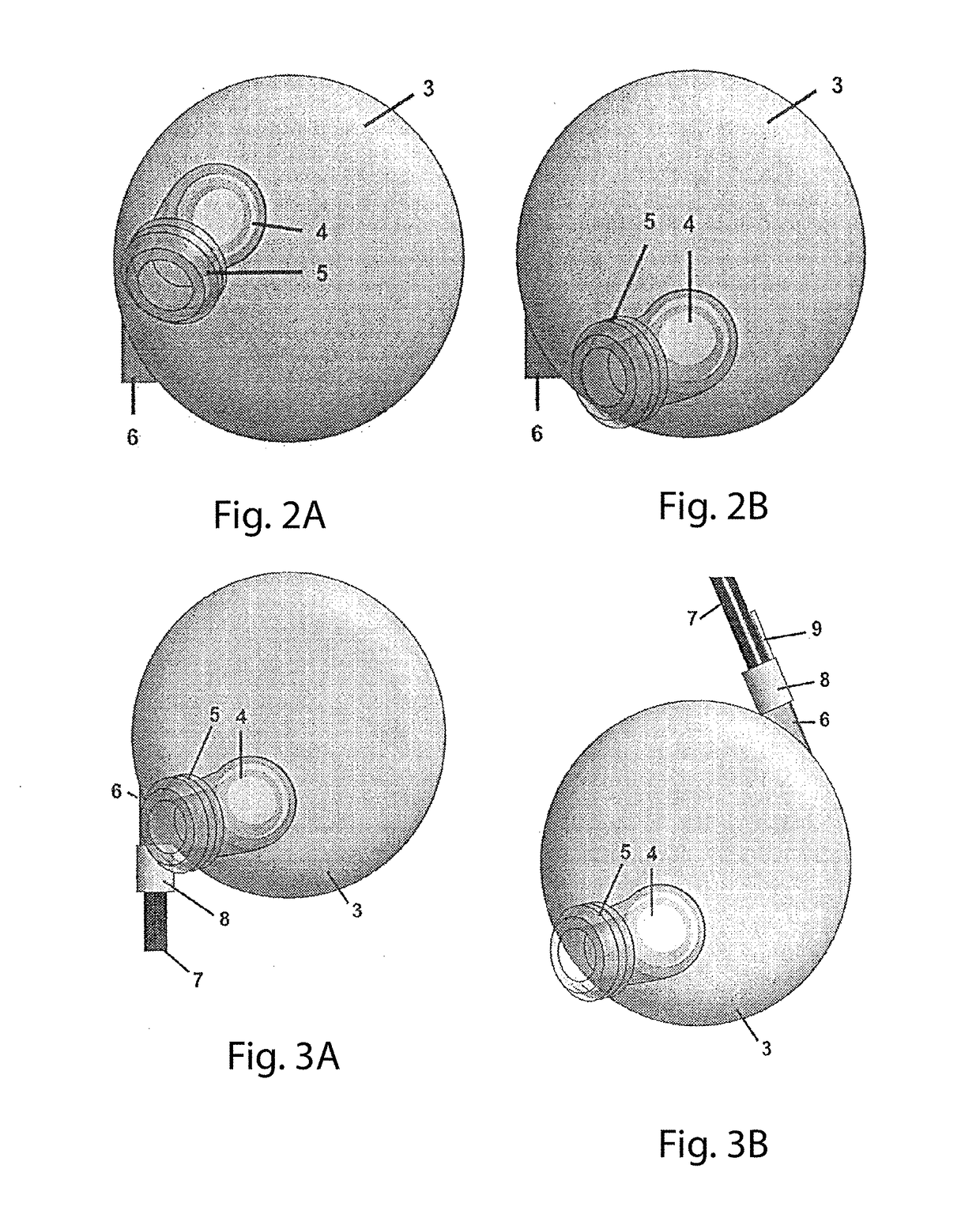However, formal studies show their regular use leads directly to permanent hearing damage.
However, under partially or wholly sealed in-ear conditions, these relatively huge motions result in harmful oscillating pneumatic air pressures within the enclosed canal volume which overly impinge a significant percentage of the speaker diaphragm excursions directly onto the delicate and
highly sensitive tympanic membrane, thereby overwhelming the natural compliance of the ear drum.
Additionally,
broadband, pneumatically coupled, in-ear sound pressures prematurely trigger the acoustic
reflex, wherein, the
tensor tympani
muscle tightens the tympanic membrane, and the stapedius
muscle pulls on and stiffens the
ossicular chain, drawing the stapes away from the
cochlea's oval window.
Under these conditions, the net result of this premature triggering of the acoustic
reflex is that sound
waves are far less efficiently passed through to the
inner ear, while their
broadband pneumatic components continue to overly impinge on the tympanic membrane.
This situation continues quite unresolved, resulting in habitual, overwhelming pressures on the tympanic membrane and leading to dramatic worldwide increases in permanent
hearing loss.
The confining of acoustically driven mechanical surface vibrations into relatively small, trapped volumes such as the
ear canal results in unintended pneumatic
displacement based in-ear acoustical amplifications similar to the intentional amplifications provided by stethoscopes, woodwinds,
brass instruments, etc.
This principle results in
hearing loss when unwittingly applied to the ear because it is masked by the acoustic
reflex and unrealized by the listener over time.
However, this phenomena becomes greatly exaggerated when the normal diaphragm excursions of earbud speakers are introduced concurrent with mandibular (jawbone) deformations of the occluded
ear canal walls such as those which occur during talking, singing, chewing, and yawning, —since all of these common physiological conditions independently create large increases in pneumatic in-ear pressures when the
ear canal surfaces are exposed yet externally sealed and their accumulating pressures are thereby kept from immediately equalizing with normal external barometric pressure.
As already observed, this condition prematurely triggers the acoustic reflex, thereby demanding excessive listening volumes leading to
hearing loss.
These leaks are acoustic as well as pneumatic and result in reduced volume levels, degraded bass
frequency response and inadequate isolation and thereby demand higher listening volumes since the speaker is now driving a greatly enlarged or even unenclosed chamber.
Here again, the typical user response has been to resort to excessive listening volumes.
Unavoidable, accidental improved sealing conditions such as occur when shoving the device in deeper or leaning the ear containing the earbud up against a pillow or headrest often results in extremely high volumes which create pain and hearing loss before the person can easily respond, since the acoustic reflex greatly masks the condition.
Under conditions of mandibular deformation, such a surface forms an inconsistent seal, thus an intermittent leak between the coupler and the ear canal is inevitable, resulting in inconsistent
coupling, degraded
sound quality and inadequate isolation.
Under wholly or partially sealed conditions, pneumatic pressures impede the motion of an earbud speaker.
Thusly impeded, the speaker exhibits slower transient responses, generating muddled, damped, lower quality sounds, which are especially nonlinear in the bass frequencies.
Additionally, the natural performance of the Helmholtz
resonance of the ear canal is significantly degraded.
Under sealed conditions, the premature triggering of the acoustic reflex results in the stiffened compliance of the tympanic membrane variably determining the level of impedance on the speaker diaphragm facing the ear canal chamber, contributing significantly to the nonlinear functioning of both the speaker diaphragm and the tympanic membrane and thereby further degrading audio performance.
The
inflatable ADEL very easily and comfortably enters, fills and displaces the full volume of the ear canal and thereby significantly reduces the
occlusion effect.
The isolation from exterior sounds is achieved by sealing the ear with unattractive, uncomfortable and noncompliant ear molds or over-sized foam or
mushroom-shaped ear tips or with moldable materials such as self-curing silicones or
wax.
In addition to being uncomfortable, conventional
coupling methods often become dislodged, variably leak or introduce the
occlusion effect (the unwanted booming bass of one's own voice), provide inadequate and inconsistent isolation / acoustic sealing and degrade the quality of in-ear
acoustics by damping, exaggerating, muffling and blurring the source sound.
Most available earbuds fit their users poorly and uncomfortably and their aesthetics tend to come at sacrifices to other earbud qualities.
The
diameter of the
coupling element inserted into the ear may be too small or large, the element may be too short or angled incorrectly to match the user's ear topology.
The oversized ear tips place a
high pressure against the ear canal
flesh and quickly become uncomfortable.
Modifications of the length, direction, and curvature of the ear tips or overall custom fits are not available options to the general earbud
consumer.
While many earbuds are advertised as providing sound isolation, none are marketed for their ability to provide the user environmental awareness, and further none provide directionality-sensitivity.
This creates a safety problem wherein the user is unable to hear warning sounds, other people, or other audible indications of impending harm.
These IEMs are uncomfortable in as much as the ear mold materials are rigid, fit tightly and do not flex with normal jaw motions; create very high levels of occlusion; and are unattractive as they tend to fill the visible ear canal with a vaguely
flesh-
colored plastic or
silicon.
Most components that comprise conventional earbuds, whether they are custom-made or commercial, off-the-shelf products are not modifiable by the user.
Current
Bluetooth connected earbuds are limited in both power and resolution.
Its
receiver system can be a heavy user of power that requires frequent recharging.
Many manufacturers opt to use a lower power version to minimize user frustrations but that comes at the cost of even less power for speaker operations.
Speakers are then chosen that can only operate within remaining
power budget, which further reduces the potential
dynamic range of music.
Because of the need for the sound emanating from speakers placed at the front of the stage to be loud enough to reach audiences in the back of the venue, attendees located closer to the stage are often subjected to deafening volumes for many hours.
However, because these devices can create pneumatic pressures which trigger the acoustic or stapedius reflex and add the booming occlusion affect one'
s voice and music, they tend to subject the performers to excessive in-ear volume levels and must be dislodged or removed in order to hear ambient sounds.
They are usually embodied in ear molds, which are uncomfortable and look unattractive.
The isolation they offer is not optimum for all situations.
Civic regulations on
noise pollution, timings and locations of events are continuing to limit venue opportunities for hosting a full-featured musical performance.
Currently available earbuds have limited ability to mitigate the excessive noise levels of amplified musical events.
On the contrary, they tend to add their own inherently excessive listening levels to the excessive volumes present at the amplified even, thereby compounding the risk of hearing loss.
Conventional hearing protectors muffle the sound, are uncomfortable and can create excessive in-ear pressures.
Additionally, occupants of areas neighboring a venue cannot practically or ethically be required to wear hearing protection devices.
Conventional in ear monitors do not allow an adjustable mixture of both the ambient and the electronically broadcast renditions of their performance.
However, the further one is from the stage, the greater the
lag between the broadcast sound and the amplified sound emanating from the stage speakers.
Prior attempts at broadcast performances used a single broadcast source using radio transmissions and timing delays were incurred by the difference in the
speed of sound (live music) versus the
speed of light (radio transmissions).
In a large enough venue, attendees receive the
radio transmission before the live music reached them, which creates an untenable timing gap.
This creates a disruptive quality gap when trying to simultaneously listen to a broadcast and a live performance.
Excessive volumes of both audio sources are additive and the risk of hearing loss is increased even further.
Problems arise from the variation in the efficiency of sound transmission and hearing sensitivity across the audible frequency range.
In a sealed ear canal, the pain threshold level is even lower, particularly in the bass, causing even more damage.
An amplitude-based digital compression
algorithm is too coarse a tool to adequately protect a listener's hearing.
Likewise, no existing in-ear-monitor1. allow an adjustable isolation from ambient sounds nor2. permit an adjustable mixture of both the ambient and the electronically broadcast renditions of their performance.
 Login to View More
Login to View More  Login to View More
Login to View More 


